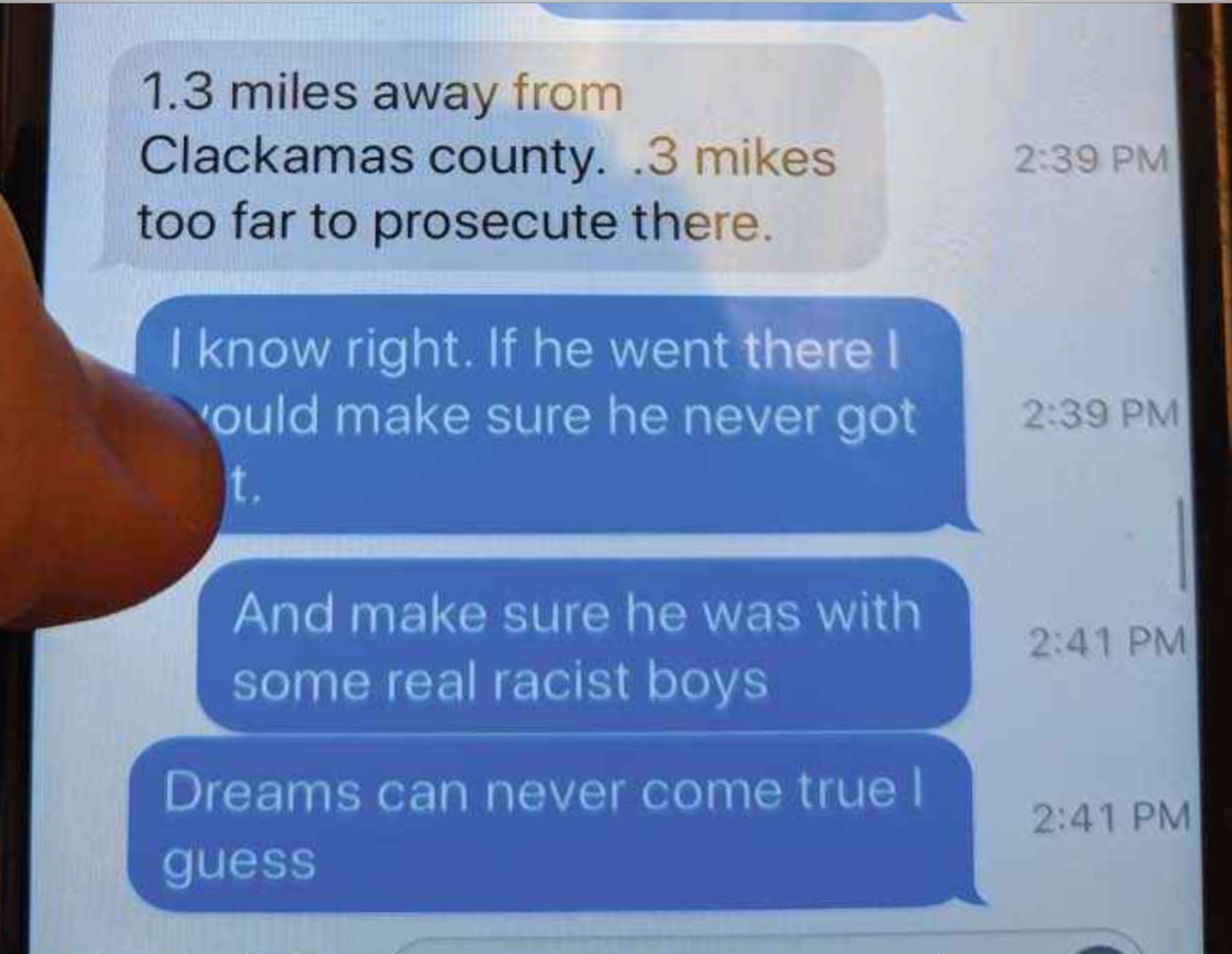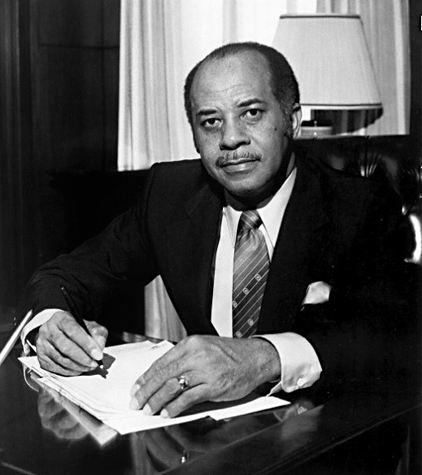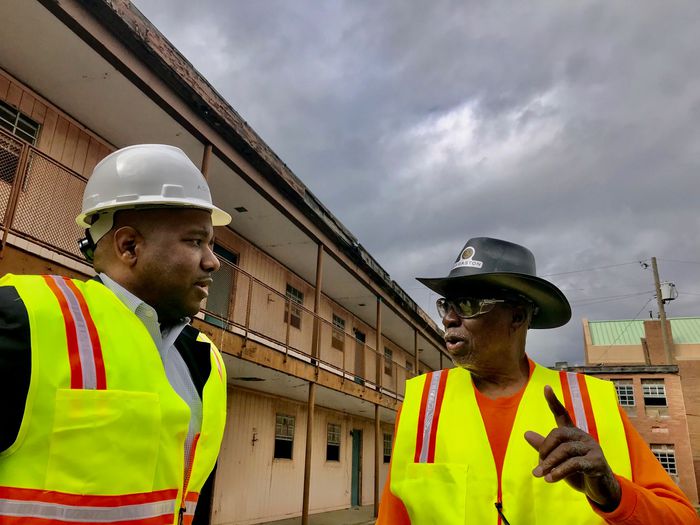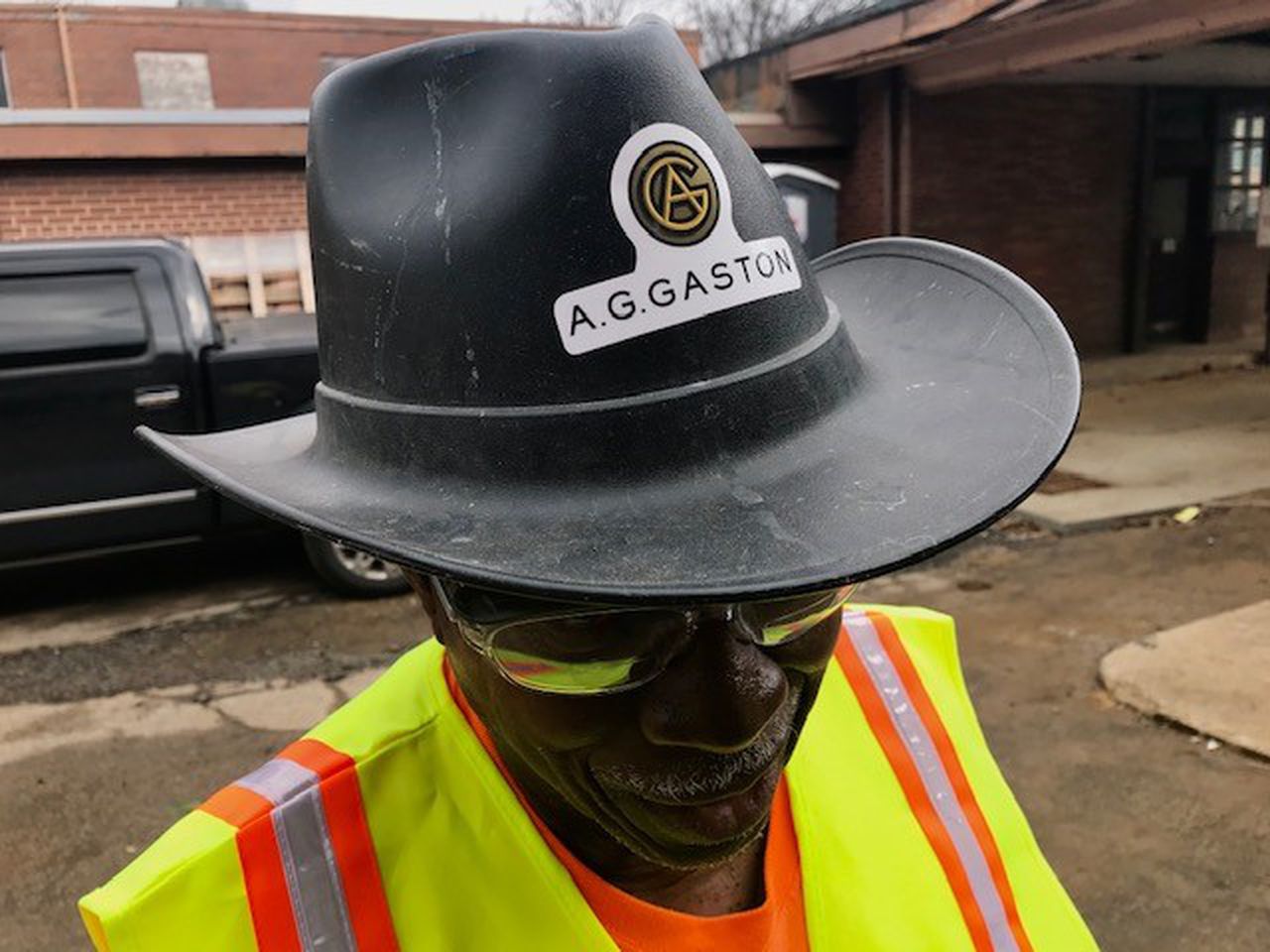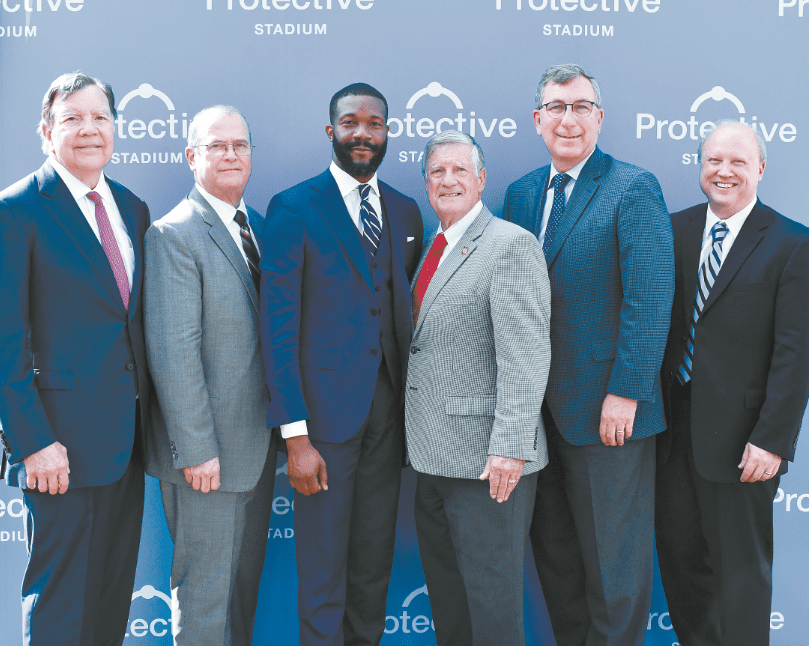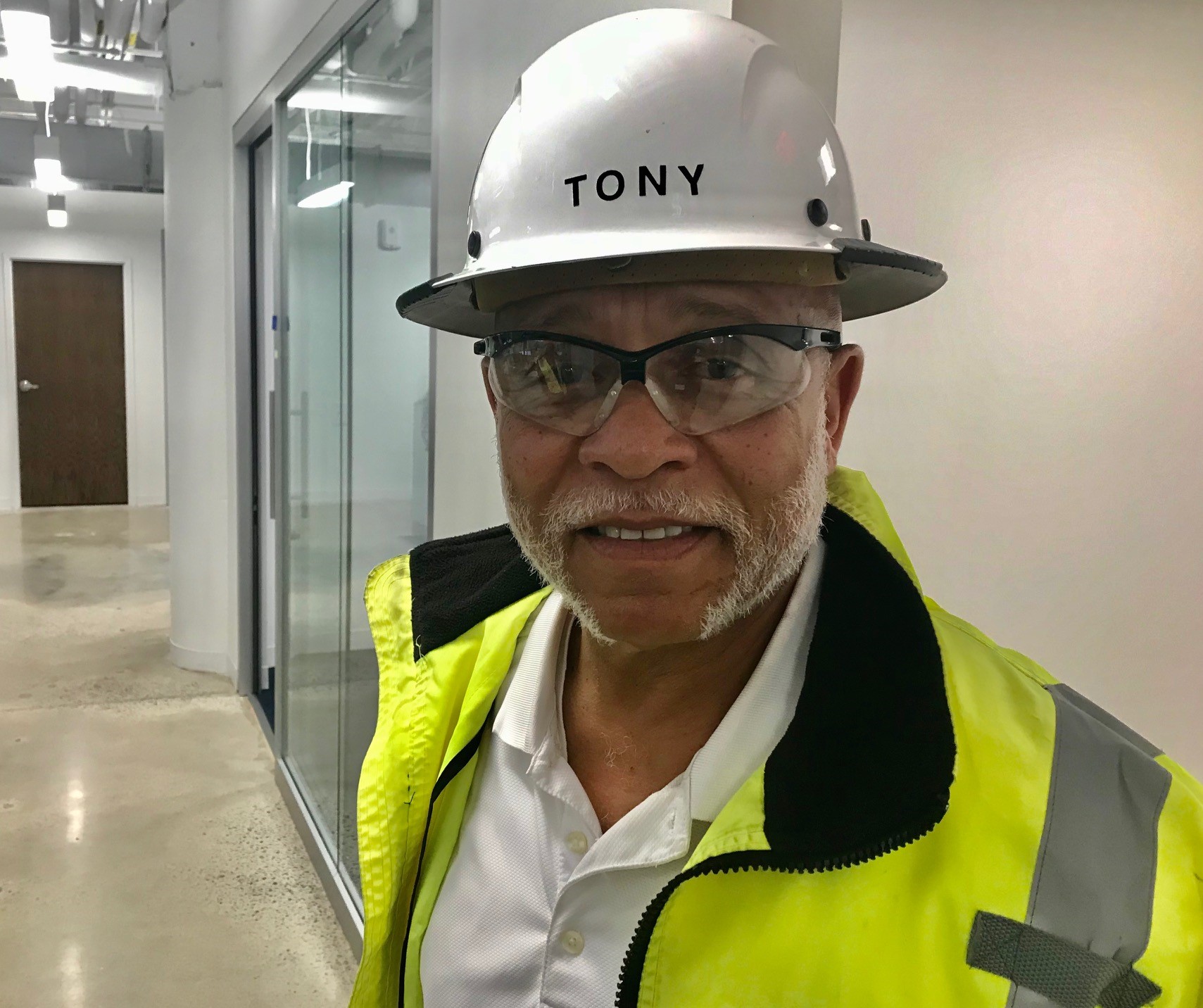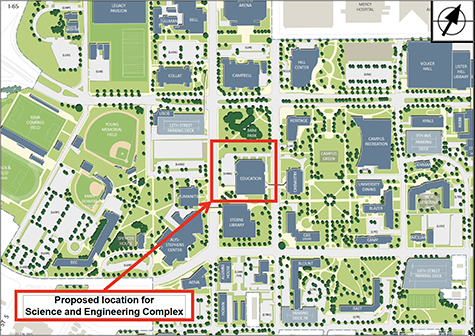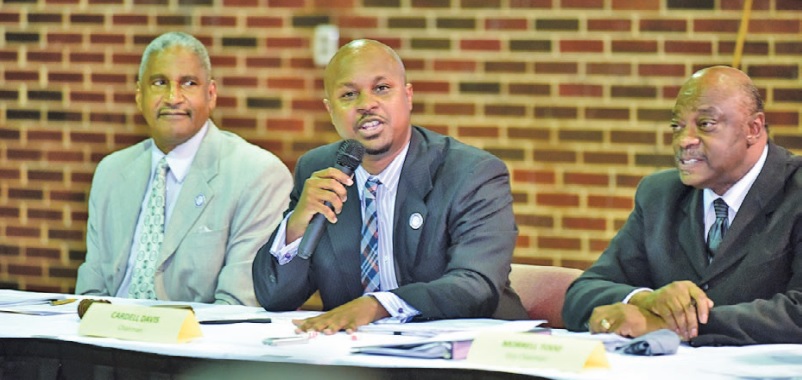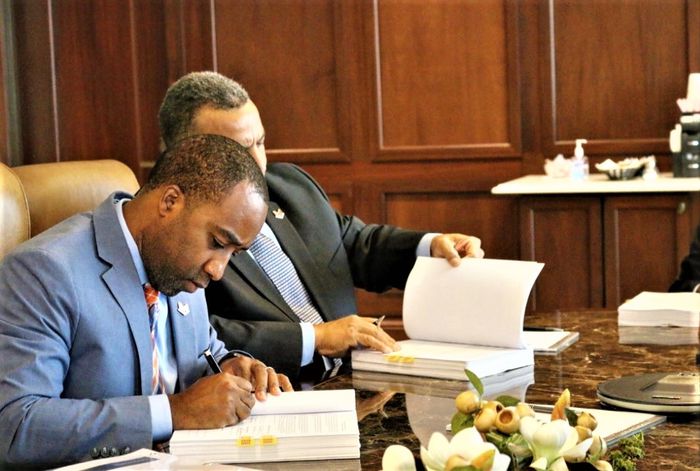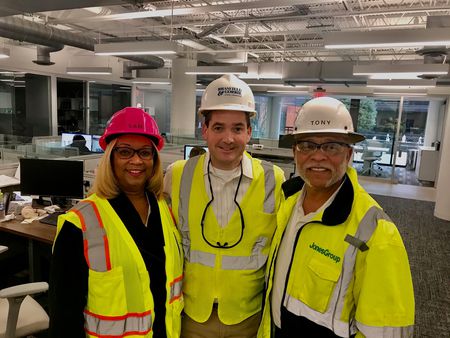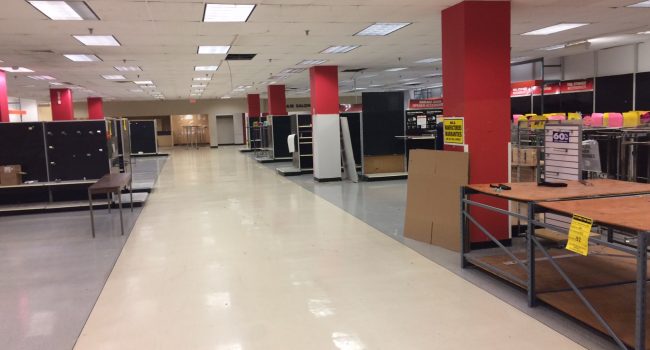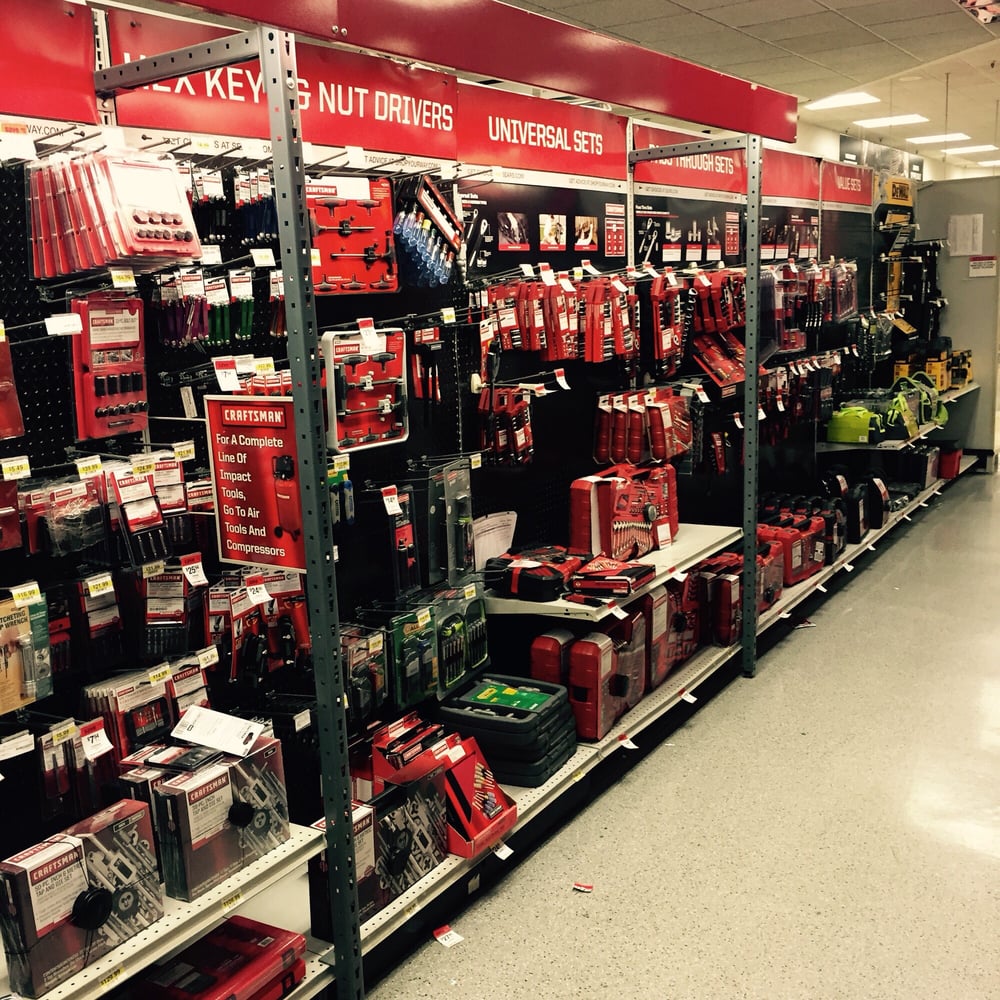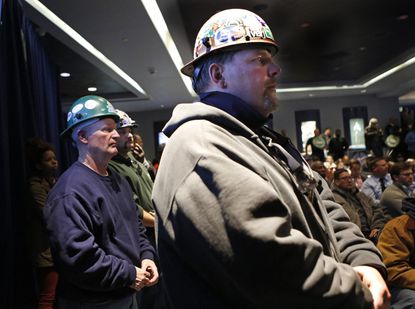Ray's article
A black man from Oregon sued the city of West Linn alleging
that police officers unlawfully surveilled him at work and then falsely
arrested him in retaliation for having raised complaints with his employer
about racial discrimination.
Michael Fesser of Portland claimed in the suit, an amended
version of which was filed last month in U.S. District Court in Portland, that
the incident left him suffering from emotional distress and resulted in
economic damages. He sued the city and several members of the West Linn Police
Department for false arrest, malicious prosecution, defamation and invasion of
privacy.
West Linn police began investigating Fesser in February 2017
after Fesser raised concerns to his boss, Eric Benson, owner of A&B Towing,
that he was being racially discriminated against at work.
According to separate court documents, Fesser said the
discrimination included coworkers' calling him racial slurs. After he raised
his concerns, Benson contacted West Linn Police Chief Terry Timeus, his friend,
and persuaded to look into allegations that Fesser had stolen from the company,
according to the lawsuit.
The suit said the theft allegations were false and
unsubstantiated.
But with the approval of West Linn police Lt. Mike Stradley,
Detectives Tony Reeves and Mike Boyd used audio and video equipment to watch
Fesser while he was at work, according to the suit. The surveillance was
"conducted without a warrant or probable cause" and did not result in
any evidence that Fesser was stealing from his employer, the lawsuit stated.
"Sgt. Reeves and Sgt. Boyd unlawfully arrested, detained and interrogated Mr. Fesser in Portland, outside their jurisdiction, without probable cause," the suit said, adding that the two officers took Fesser's personal belongings, including papers expressing his concerns about racial discrimination at work.
Fesser spent about eight hours at the police station before
he was released on his own recognizance. He was later contacted by West Linn
police to come to the station to retrieve some of his belongings. While he was
there, officers informed Fesser that he had been fired from his job, according
to the lawsuit.
"The West Linn Defendants' surveillance, arrest,
incarceration and interrogation of Mr. Fesser without a warrant or probable cause
and their pursuit of baseless criminal charges against Mr. Fesser were racially
motivated, retaliatory, extra-jurisdictional and an egregious abuse of the
power with which the police are entrusted," the suit said.
According to the
lawsuit, criminal charges in the arrest weren't filed until after Fesser sued
his employer over his termination and for discrimination. The charges were
later dismissed.
During the litigation in the lawsuit against his employer,
Fesser learned that the West Linn police investigation into the alleged theft
began as a favor to his former boss, according to the suit. Text messages
revealed during the legal proceedings showed that Reeves and Benson discussed
the investigation.
In one message, Reeves said Fesser should be arrested before
he went further with his racial discrimination complaint against his job so it
would not look like retaliation.
The City of West Linn
has since settled the lawsuit and agreed to pay Fesser $600,000. The lawsuit
against his employer was settled in March 2018 for $415,000.
Paul Buchanan,
Fesser's attorney, said his client is pleased that both cases have been
resolved.
"He is doing fine," Buchanan said. "This was not about money for him. This was about that they should not be allowed to do this."
According to Buchanan, the settlement against the police department could be the largest in the state for a wrongful arrest.
Timeus retired from the department in October 2017 following allegations that he drove drunk. You can find the complete West Linn Tidings story CLICK HERE
A&B Towing and the Portland Police Department did not immediately return requests for comments.
The West Linn Police Department said the settlement "is not an admission of liability."
"The City of West Linn and the West Linn Police Department do not tolerate any acts of discrimination or disparate treatment by its employees," the department said in a press release. "In 2018, when the allegations were first reported, an internal investigation was conducted and swift and appropriate disciplinary personnel action was taken."
Rico Washington was
sad. Oh, he was ecstatic, too. His company, Construction Works won the bid
to construct a new aircraft rescue firefighting station at the
Birmingham-Shuttlesworth International Airport. The bid was the “lowest and
best” offer — in the language of the public bidding world — among four
companies vying for the $10.3 million project.
Washington’s
celebration was tempered, though, when he learned it was largest ever such
prime contractor bid awarded to an African American-owned firm on a Birmingham
construction project.
“Really?” he asked. “That’s
sad. Now, let’s fix it.”
Now, indeed.
NOW, when
Birmingham, Alabama’s largest city, is smack in the midst of an unprecedented
construction boom.
NOW, when more
than $300 million in taxpayer funds
will be spent to build a 42,000-seat stadium downtown and renovate outdated Legacy Arena.
NOW, when private
developers are on a giddy spending spree, too — sprinkling hundreds of millions
on the city’s core over the next three years like pixie dust, renovating and
restoring long-neglected downtown buildings and structures like Carraway Hospital ($327 million) and building
new ones like the Red Mountain Theater Company arts campus ($25 million).
NOW, when the
Birmingham Airport Authority expects to spend $117 million on capital improvements and $5 million on concessions over the next four years. “There will be
no end to the work we do for our customers,” airport CEO Ron Matthieu shared
last fall at a one-day conference for minority and women entrepreneurs. “It
will never stop.”
NOW, just after
ALDOT dropped $475 million to
replace the massive I-59-20 downtown overpass.
NOW, as the Housing Authority of Birmingham (HABD) prepares to spend $100 million in the next three years redeveloping five public housing communities.
NOW, after the University of Alabama at Birmingham spent more than $100 million on construction last year and estimates spending another $100 million in the next two to three years.
Do that math: Easily,
a cool billion could be spent on construction projects in Birmingham over the
next three years, alone.
Yet, this is our
shameful truth: Three decades after former mayor Richard Arrington launched the Birmingham Plan, a volunteer strategy to ensure minority-owned firms shared in
the city’s construction surge, which included an estimated $800 million in
commercial and public infrastructure spending between the late 1980s and early
1990s, few of Birmingham’s black- and women-owned construction firms are
prospering.
Some are doing well, no doubt. But truly prospering — as in,
capable of standing bid-to-bid with the city’s biggest construction companies?
Nah, not now.
BONDS, BIG BONDS,
NEEDED
One measure of a
construction company’s heft is its bonding capacity, the cost of a project that
a bonding company is willing to insure. To have, say, a $175 million bonding
capacity requires not only a lineage of successful large-scale projects but
also $26 million to $35 million in the bank — security representing 15-to-20
percent.
It is challenging to build those reserves without overseeing numerous big projects that produce positive cash flow, and it is a challenge to land those projects without a sizable bonding capacity.
Welcome to the
classic chicken-egg question.
Earlier this month, Brasfield & Gorrie, the city’s largest construction company, won the bid to build Protective Stadium, which is
projected to cost $179 million.
“No [minority-owned
firm in Birmingham] can build a $50 million project,” says Michael Bell,
executive director of the Birmingham Construction Industry Authority, an
oft-criticized entity that was created in 1980 in response to legal actions
taken against the Birmingham Plan. “It’s a sheer matter of cash flow. One could
not even submit a responsive bid. They can build a building like anyone; most
just don’t have the capacity to [bond more than] $5 to $7 million on a
project.”
“In many ways, the whole system has failed the minority
contractors,” says Tony Jones, founder of the Jones Group (The company
generated $2.5 million in revenue in 2019, according to Jones.) “The decision-makers, <Such as the Birmingham City Council, pictured above> who have largely been
minorities themselves in this town, for some reason are not [committed] to help
a minority company go from being a $100,000 revenue company to a $1.5 million
company. The train’s off the track.”
“A lot of disadvantaged [firms] are starving,” says L’Tryce Slade, founder of Slade Land Use, Environmental and Transportation LLC, <Pictured above> which
possesses a $3 million bonding capacity. “I have projects in Nashville, Dallas,
Atlanta, and Montgomery. I have projects in Birmingham but don’t feel the same
respect here. Why?"
Some black contractors,
simply and bluntly put, die from cash flow.
“We’re going to dump five hundred million into our city and
if we have nothing to show for it, shame on us,” says Brian Hamilton, managing
director of the A.G. Gaston Construction ($15 million aggregated bonding
capacity). “It’s not anyone’s fault. It’s all of our fault.”
If not now, then when? And why didn’t it happen before?
For a time, it did. Twice, in 1977 and 1989, the Birmingham City Council passed ordinances requiring minority firms get 10 percent participation in all public construction projects. Over time, minority firms reportedly gained almost a third of the contracts. But Arrington’s Plan was challenged in court, by the Alabama Associated General Contractors, and nullified by Crosson v Richmond, the 1989 U.S. Supreme Court ruling that declared the minority set-aside program for municipal contracts in Richmond, Va., unconstitutional.
The AAGC proposed the creation of the BCIA as an entity that
would certify minority firms, provide industry oversight and foster continued
growth. But it could seemingly do no
right.
Efforts by minority- and women-owned companies to crack the Birmingham construction industry’s granite code are further stunted by Alabama’s stifling bid law. It requires any public expenditure of at least $15,000— a ridiculously minuscule amount — to be awarded to the “lowest responsible bidder” in a sealed-bid process that does not even have to be advertised. (Professional services are excluded.)
Has anything changed in 30 years? There are really two answers: Somewhat and we’ll see.
“We have capable [minority-owned] firms here,” says Clinton
Woods, owner of Prescott Contracting and the District 1 City Councilman. “There
are a lot of good things happening, but we’ve got to get better. Our [city’s]
role is to build capacity, awareness, and opportunity.”
Protective Stadium and the long-overdue renovation of Legacy Arena are a “unique” opportunity for public spending to break from its tainted history and boost the trajectory of black- and women-owned construction firms in the city, says BJCC Executive Director and CEO Tad Snider. “[They’re] not going to come around every 10 years,” he says. “So how do we refine and enhance the process and do what needs to be done to prepare businesses to grow?”
The BJCC strives for
30% inclusion by minority- and women-owned companies, Snider says, and is
“clear” about the goal with bid-winning firms. “We try to find partners that
share that commitment.”
For accountability, the BJCC engaged Selena Dickerson, founder/owner of Sarcor, LLC, a black (and female)-owned engineering firm, to track dollars spent on the projects with black-and women-owned firms. Each month, she creates a detailed — to the penny — report.
Prime contractors are required to submit the amount they
spend with diverse subcontractors, and those figures are confirmed with the
businesses.
Through December 2019: 28% of spending on stadium excavation was made with minority- and women-owned firms, including $481,714.75 spent with black-owned Championship Enterprises (asphalt milling, demolition, hauling, and erosion control).Spending for professional services (architecture, engineering and construction management) for the stadium totaled $2,778,214.25 with eight diverse firms, representing 21% of overall dollars spent.
For the Legacy Arena renovation (contracting bids open
February 20), $3,898,981.17 was spent with 15 minority- or women-owned firms —
28% of the total.
Snider <Pictured above> presented the update at a City Council Committee of the Whole meeting. Councilor Steven Hoyt has long been a vocal critic of the BJCC’s historic dearth of spending with minority- and women-owned firms. “Well,” he said to Snider, “you have shut me up.”
Outside of City Hall,
particularly among minority-owned firms, there is frustration with Birmingham’s
level of spending of taxpayer dollars with black- and women-owned enterprises.
(The city’s five-year Capital Improvement Budget totals more than $350 million
for FY19 through FY23.
“I don’t depend on the city for anything,” says Tony Jones <Pictured ABOVE>. “I don’t even
bid on their jobs. We go a whole other route. We go to the private sector and
work with those who will work with us. I don’t care what color they are.”
Inside City Hall,
there is frustration, too, with the state bid law constraints.
“There is a spirit and desire to do more, but we can’t ignore [it],” says Tene Dolphin, deputy director of diversity and inclusion in the mayor’s office. “We can’t give preference points or have the appearance of awarding one contract over another based on race or gender.”
“We just have to focus,”says Dolphin <Pictured above>, who once served as senior deputy director of Washington D.C.’s Department of Small and Local Business and worked in the U.S. Department of Commerce.
“We have to challenge [general contractors] and we want to. We also need all of our service providers to take further steps in growing companies and building capacities – from the back office to bookkeeping, to funding and bonding to knowing how to bid on projects.”
This year, UAB will begin construction on the science and engineering complex, athletic support building for baseball and softball and renovation of the Boshell building. The university must abide by the state bid law but, through its Small Business Inclusion effort, strives to “partner with diverse business enterprises to train and prepare the businesses in our community, ultimately supporting the community involvement and economic development pillars of UAB’s strategic plan,” according to a UAB spokesperson. “Our bids stay within state laws, while representing UAB’s culture and shared values.”
Last year, UAB spent
more than $15 million with MBEs, according to Greg Parsons, associate vice
president and chief facilities officer.
HABD and the Airport Authority have bid standards to assure high-quality standards are met, but since they’re largely funded with federal, not with state or local dollars, they’re not handcuffed by the restrictive state law. Thus, the agencies can be more intentional about engaging women- and minority-owned firms.
Last fall, the HABD approved an agreement with Southside Development Company, a consortium of six firms to oversee the $26 million
development of the Southtown public housing community. The consortium includes
construction heavyweights Corporate Realty and B&S, as well as two black-owned firms, Gaston and The Benoit Group, based in
Atlanta.
“I am committed to ensuring that minority- and women-owned businesses are operating on a level playing field,” says Cardell Davis, who chairs the HABD board of commissioners <Pictured above, center>. “Our task is to create policies that allow for equal opportunities and to make sure that those policies are being implemented.”
Rico Washington, VP Operations, Construction Works <Pictured above>
Construction Works, which has begun construction on the airport fire station, has a bonding capacity of $20 million for a single project, $50 million in aggregate, according to Washington. The company is based in Georgia, although it is opening a Birmingham office. Company founder, Cedric Walker, is a native of Tuscaloosa; Washington grew up in Titusville.
The company has a strong portfolio of projects, including several airport projects. The company constructed a $20 million equipment facility for Delta Airlines at Atlanta’s Hartsfield International Airport under Dunn Works, its unique joint venture with J.E. Dunn Construction, a 90-year-old company with $3.6 billion in revenue and 20 offices nationwide.
There is still
lingering antipathy with the private sector due in some circles to its legacy
of obstinacy towards black- and women-owned businesses. Though it’s seemingly
fading with more large firms appearing to be using DBEs for significant
subcontracting roles.
Brasfield
& Gorrie, the city’s largest construction company, has gone even
further. Last September, with the blessing of CEO Jim Gorrie <Pictured above>, son of founder
Miller Gorrie, the company launched EQUIP to “deliver education and
networking opportunities” to minority- and women-owned enterprises, as well as
“a forum to engage in industry best practices.”
For Jones Group,
LLC, EQUIP has been much more.
Samuetta Drew (left),
Sr. Executive Director of Security Operations, and founder Tony Jones (right)
of Jones Group, LLC, with Brasfield & Gorrie project manager Robert Robison
(center)
The brothers (along with Ronald’s wife, Roxie, who quit her
job with the U.S. Department of Commerce to join them) launched as a staffing
company in Mobile doing cleanup for the deadly oil spill in the Gulf of Mexico
that year. They later moved to Birmingham and handled clean up after the deadly
tornadoes that hit the city in 2011.
With a desire to move into contracting, they installed flooring for Lowe’s (“They did not have any black-owned companies installing floors,” says Tony Jones) then created three divisions: flooring/sheetrock, framing, and ceilings.
They began remodeling homes and churches then, in late 2017, received a call from B&G to see it was interested in quoting a job for them. “Of course, we said yes,” Tony said.
The company is now
acting as a general contractor in the area of utilities—under Jones Group
Utilities—and is striving to be general contractors in construction.
“We try to survive on our performance,” Tony Jones adds. “Independent of race, creed or color, we want to perform. We want you to think of the Jones Group as a good company. Sure, we’re a minority-owned company but we want the first thing you think to be that they are a good company.”
DON’T LOSE MOMENTUM!!!
Washington and others
firmly believe the key to capitalizing on this time of unprecedented growth,
beyond continued education on business operations, is a further collaboration
among minority- and women-owned firms—combining resources, for instance, to bid
for bigger projects.
“Being selfless and
open to collaboration,” he says. “I can compete against you and still share
stuff with you. I know my limitations; I can’t do every job. Together, though,
we can do more. We have to show them.”
If not now, when? Or ever? We’ll see.
THIS ARTICLE WAS ORIGINALLY WRITTEN BY ROY S. JOHNSON FOR AL.COM
Sears is demonstrating that it’s perhaps the saddest and
most prominent victim of the so-called ‘retail apocalypse’ sweeping across the
U.S. Sears, which is owned by Transform
Holdco, is set to close 51 total stores by
February 2020, according to a press release from the parent company. And as
tradesmen we are horrified, the very thought of losing the immediate gratification from trying on your first pair of Die-Hard boots, or purchasing that classic ruby
red Craftsman speed square, is sending chills down the backs of construction pros everywhere.
Our beloved Sears narrowly escaped complete shut-down after filing for bankruptcy in the fall of 2018. Since then, more than 250 stores have closed their doors. In the past 15 years Sears and it's partner Kmart have closed more than 3,500 stores and cut about 250,000 jobs, according to USA Today.
After this new round of closings and previously announced closings, this once grand jewel of the retail industry that traces its roots back 133 years will have just 182 stores nationwide.
CLICK LINK FOR LIST OF SEARS STORES CLOSING IN 2020
BUT NOW WHAT? WHERE WILL WE BUY OUR BELOVED BRANDS,
DIE-HARD, CRAFTSMAN, AND THE WIDE VARIETIES OF TIMBERLAND PRO, AND DICKIES???
First sold in 1927, Craftsman was the flagship brand in the
Sears tool section. For 90 years this esteemed brand name was synonymous with
quality manufacturing, affordable pricing, and an almost legendary lifetime
warranty. These three traits meant that it was almost impossible to find an
American garage or workshop that didn’t have at least some Craftsman tools
hanging on the walls, familyhandyman.com
"After careful review of where we are today, we believe
the right course for the company is to accelerate the expansion of our smaller
store formats which includes opening additional Home & Life stores and
adding several hundred Sears Hometown stores after the Sears Hometown and
Outlet transaction closes," the company said in a press release.
So according to release, the new closings do not affect the company's recently acquired Sears Hometown stores, which specialize in home appliances, equipment and tools from the Sears line of products like Whirlpool, Craftsman, Kenmore and Die Hard. Our beloved brands, but also other brands as well.
According to theadvocate.com:
The Hometown and Outlet stores have been insulated somewhat from Sears’ struggles in recent years. The Hometown and Outlet stores, however, have struggled as many retailers nationwide have had to downsize. The company reported a net loss of $3 million in the fourth quarter of 2018 compared to the previous year and $41.6 million for the year compared to 2017.
Last month the Hometown and Outlet Stores rejected an offer
from a company affiliated with the hedge fund controlled by former Sears CEO
Eddie Lampert to buy all the remaining Sears Hometown stock not already owned
by the fund. Lampert, a CEO who was once kidnapped and held for ransom, according to some reports, is interested in closing the
Hometown stores.
"In many cases, the smaller towns or less affluent
areas of the country where there's not much hustle and bustle or competition
are where people still want to go someplace to shop,” said Jake Dollarhide, a
Tulsa, Oklahoma-based investment adviser and retail analyst. “They don't want
to pay for Amazon Prime or delivery charges and instead want to go get the
products they need now at stores they know nearby."
BLACKTRADESMEN.US WILL FOREVER LOVE DIE HARD BOOTS!!! XOXO
We’ve reported the fact before that black construction union
members earn less on average than white union members. The unionized
construction workers in New York City specifically, earn 20% less on average
than their white co-workers performing the same trade. Through the
implementation of racial discriminatory hiring practices and Jim Crow ere
pre-apprenticeship programs New York City’s construction labor unions have
effectively maintained a 91% white male membership.
This is the story of Averil C. Morrison, a black tradeswoman,
who along with 4 other union operating engineers ( one black tradeswoman, 2 black
tradesmen, and 1 Hispanic tradeswoman) sued the International Union of
Operating Engineers Local 14-B—a AFL-CIO member union—for racial discrimination.
AVERIL MORRISON IN HER OWN WORDS
“As one of fewer than 20 minority females in the
1,600-member International Union of Operating Engineers Local 14-14B — one of
the city's construction unions — I know first-hand that our mostly white
membership book is not a coincidence. Rather, from my perspective, it appears
to be a direct consequence of the union leadership's actions to limit access
and opportunity for skilled workers who aren't white males.
In New York City, the Operating Engineers is considered an
elite construction union. Members operate bulldozers, backhoes, cranes and
other heavy machinery, and they're paid well for their work. Hourly pay and
benefit rates range from roughly $70 an hour for unskilled jobs to $120 an hour
for skilled positions. (Work that's done on weekends, holidays or overtime is
paid at double the base hourly rate.)
These are the jobs that helped build the middle class, and
it's easy to understand why workers of all racial backgrounds aspire to them.
Unfortunately, New York City's construction unions have historically kept these
opportunities from people of color. You can still find on city government's
website a copy of "Building Barriers," a report on racial
discrimination in the construction industry that was released in 1993.
The city's unions argue that they've improved since then,
and certainly they have. Some of these improvements were court-ordered. But
progress remains painfully slow. At the end of 1988, 9% of Local 14-14B's
membership was non-white; today that figure is roughly unchanged, in a city
that's 35% black and 27% Hispanic.
On a personal level, it's clear the problems that a black
woman like myself faced then still exist today.
It starts with the apprenticeship program, the pathway
through which a worker is supposed to learn the skills of their trade and move
on to full union membership. In my class, which was composed entirely of
minorities, we spent our time either sitting in the classroom or watching other
people work on equipment; I didn't receive on-the-job training until my second
year. But there's a loophole: If you're sponsored or referred by an existing
member, you can bypass the apprenticeship program and earn higher journeyman
wages on the job as you learn your skill.
Not surprisingly, friends and family of the existing white
membership are frequently beneficiaries of this loophole, while people of color
languish in an apprenticeship program with minimal pay and opportunity. It took
me nearly four years to "get my book" — a term used to describe full
union membership — and even then, it was only through persistent communication
with the gentleman running the training program. Other minorities aren't so
lucky.
Unions are supposed to create a level playing field for
workers, nowhere more so than in the hiring hall where work is assigned. The
hall opens at 6 a.m. every morning, and available jobs on any given day should
be distributed on a first-come, first-serve basis. Access to the longer-lasting
and better-paying jobs is supposed be a matter of luck. In reality, rising
early and having luck matter less than who you know and what color your skin
is.
I should know. I've spent too many mornings waking up at
2:30 a.m., commuting to the hiring hall, and standing outside for two hours
only to receive a low-paying job that lasts for a day or two — or no work at
all. Meanwhile, the good-paying jobs on long-term construction projects are
assigned far in advance, when the union's business agent parcels them out
overwhelmingly to connected white males.
In 2012, fed up with being treated as second-class citizens,
a few of my colleagues and I filed a discrimination complaint against our
union {The trial begin spring 2016}. We filed the complaint not just for
ourselves, but on behalf of other minorities who are skilled tradespeople but
are being denied the opportunity for good work on account of their skin color.
We're not trying to punish the union. We're trying to improve it.” - Averil Morrison, New York Daily News
According to Laborpains.org court findings revealed, the union (Local-14b) allegedly
allows its predominately white membership to refer new prospective members (who
are predominately white) as full journeymen, while requiring prospective
members without connections (who are more non-white) to do lower-paid
apprenticeships. The plaintiff union members allege that the largely white
referred new members get to skip apprenticeship even if they do not have “any
qualifications other than being sponsored by an existing White member.”
A brief review of Local 14-B’s wage scale shows just how big
a favor skipping apprenticeship all together can be. According to the 2015-16
apprentice wage scale, first-year apprentices are paid $29.25 per hour (40% of
the Pile Driver rate). By the end of a three-year apprenticeship, the wage
rises to 60% of the Pile Driver rate ($43.87/hour). Meanwhile, a full-member journeyman Pile
Driver is making $73.12 per hour.
There are further allegations of the union rigging job
placements in favor of white members. Using its control of the hiring hall
system of job referrals, Local 14-B allegedly manipulates the hiring hall so
that white members get jobs that last longer (which assures white members of
higher earnings and less time unemployed). Even more egregious, Local 14-B’s
absolute discretion for assigning “master mechanics” (essentially shop stewards)
ensures a racial wage gap, as master mechanics who are appointed are allegedly
“almost never” non-white. Master mechanics allegedly “can work virtually as
much double time as he desires” and “easily earn several hundred thousand
dollars a year.”

